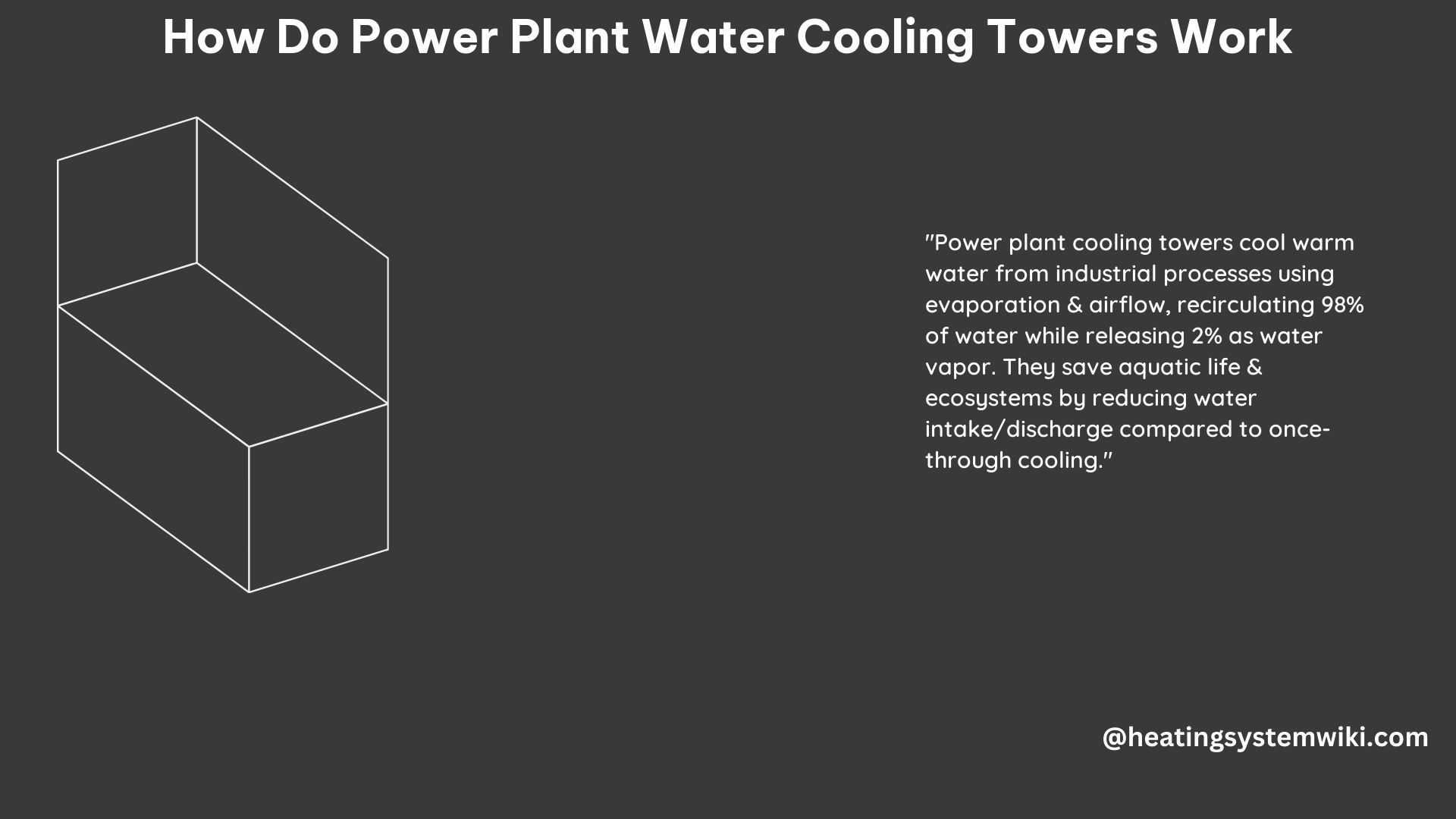Power plant water cooling towers are essential components of thermal power plants that work on the principle of heat transfer through evaporation. They help to remove the heat absorbed in the circulating cooling water systems used in power plants, petroleum refineries, petrochemical plants, natural gas processing plants, food processing plants, semi-conductor plants, and other industrial facilities.
Understanding the Cooling Tower System
The cooling tower system is governed by the operational variables of:
- Make-up Volumetric Flow Rate: The rate at which fresh water is added to the system to compensate for water lost through evaporation and blowdown.
- Evaporation and Windage Losses: The amount of water lost to the atmosphere through evaporation and as small water droplets (windage or drift).
- Draw-off Rate: The rate at which a portion of the circulating water is removed from the system to prevent the buildup of dissolved solids.
- Concentration Cycles: The number of times the water is recirculated before being drawn off, which determines the level of dissolved solids in the circulating water.
The cooling process works as follows:
- Water is pumped from the tower basin and circulated through the process coolers and condensers in the industrial facility.
- The cool water absorbs heat from the hot process streams, warming the circulating water.
- The warm water returns to the top of the cooling tower and trickles downward over the fill material inside the tower.
- As the water trickles down, it contacts the ambient air rising up through the tower, causing a small amount of the water to be lost as windage or drift and some of the water to evaporate.
- The heat required to evaporate the water is derived from the water itself, which cools the water back to the original basin water temperature, ready to recirculate.
- The evaporated water leaves its dissolved salts behind in the bulk of the water, raising the salt concentration in the circulating cooling water.
- To prevent the salt concentration from becoming too high, a portion of the water is drawn off or blown down for disposal.
- Fresh water make-up is supplied to the tower basin to compensate for the loss of evaporated water, windage loss water, and draw-off water.
Cooling Tower Capacity and Design

Industrial cooling towers are used to remove heat from various sources, such as machinery or heated process material. A typical 700 MW coal-fired power plant with a cooling tower amounts to about 71,600 cubic meters an hour (315,000 US gallons per minute), and the circulating water requires a supply water make-up rate of perhaps 5 percent (i.e., 3,600 cubic meters an hour, equivalent to one cubic meter every second).
The cooling tower’s iconic shape is known as a hyperboloid, which refers to its inward curve. This shape makes them very stable, but to ensure they can withstand the elements and last for decades, cooling towers often feature reinforced concrete construction. Concrete is strong in compression but lacks tensile strength, so cooling towers have both vertical and horizontal hoop reinforcement to handle any tensile forces generated.
Designing and building a cooling tower today would require significant computing power, but the construction of Drax’s first tower, completed in 1970, was likely designed by hand in the mid-1960s. Despite the limited technology available at the time, these cooling towers were constructed to a very high degree of accuracy.
Environmental Considerations
Power plant water cooling towers play a crucial role in preventing thermal pollution. Thermal pollution occurs when large amounts of hot water are discharged into natural water bodies, raising their temperature and affecting the local ecosystem. Cooling towers help to dissipate the heat into the atmosphere instead, spreading the heat over a much larger area than hot water can distribute heat in a body of water.
Evaporative cooling water cannot be reused for subsequent purposes, whereas surface-only cooling water can be re-used. Some coal-fired and nuclear power plants located in coastal areas do make use of once-through ocean water, but even in these cases, the offshore discharge water outlet requires very careful design to avoid environmental problems.
In summary, power plant water cooling towers work on the principle of heat transfer through evaporation, removing the heat absorbed in the circulating cooling water systems used in power plants and other industrial facilities. The cooling tower system is governed by operational variables, and their iconic hyperboloid shape, reinforced with concrete and steel, makes them both stable and durable. These cooling towers play a crucial role in preventing thermal pollution and managing the water resources used in power generation and other industrial processes.
References:
– Explain Like I’m Five: How Do Cooling Towers for Power Plants Work?
– Inside a Cooling Tower: What It Looks Like and How It Works
– Cooling Tower
– How Do Cooling Towers Work?
